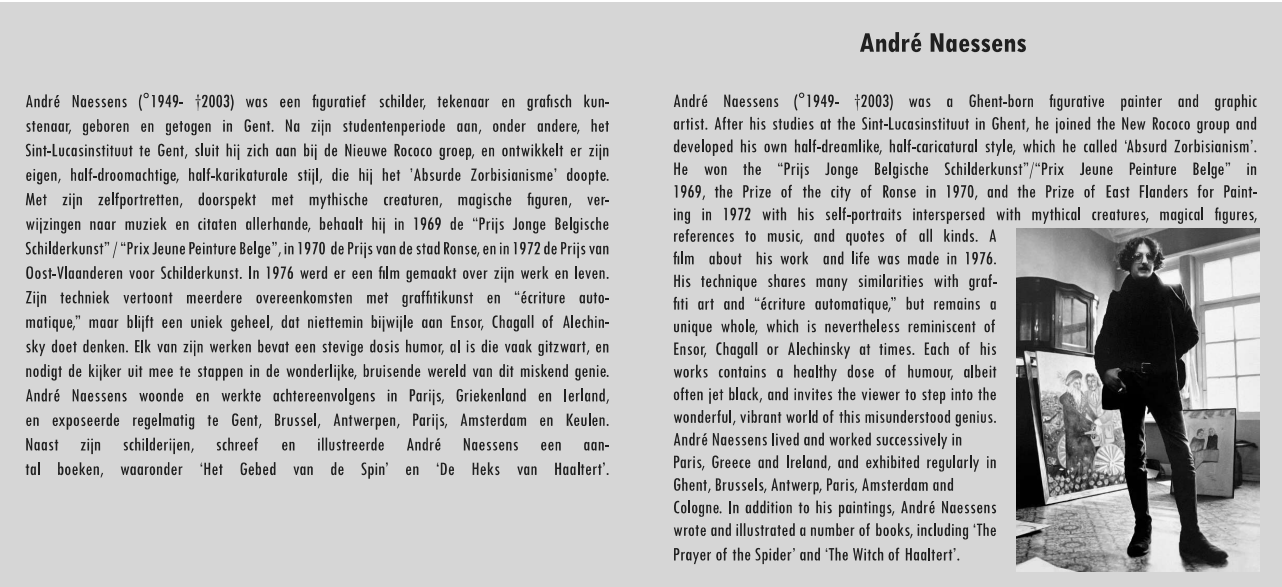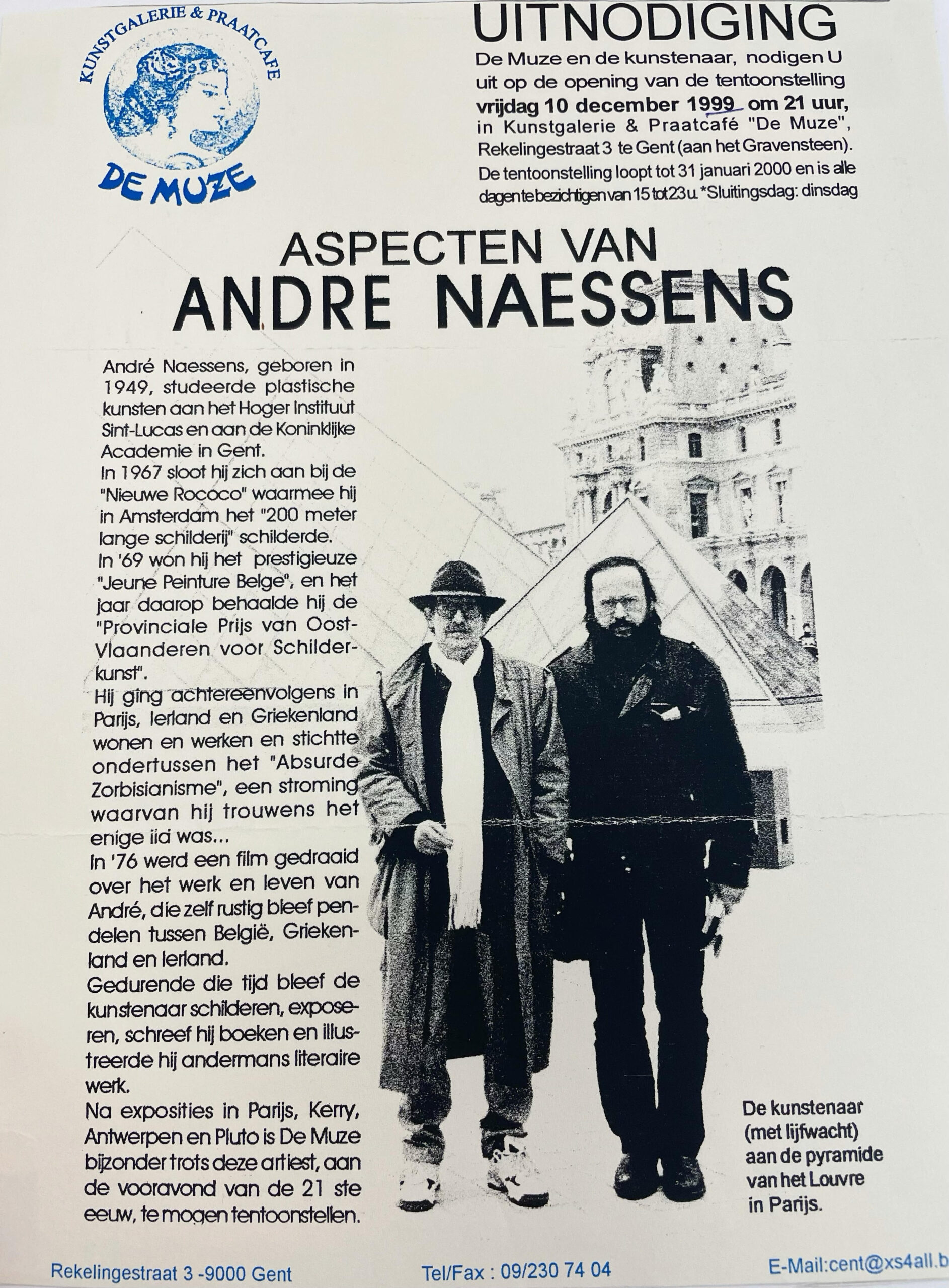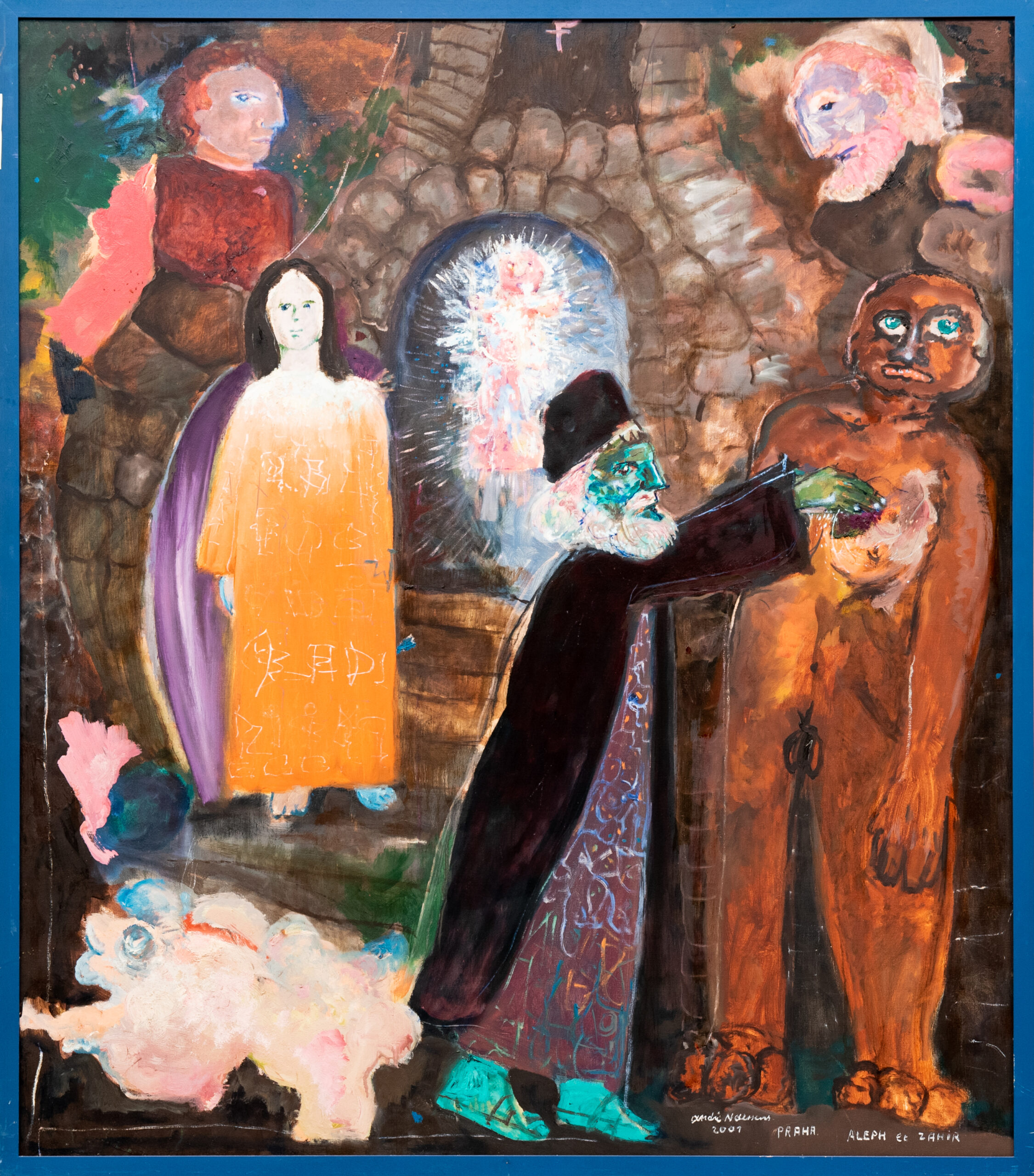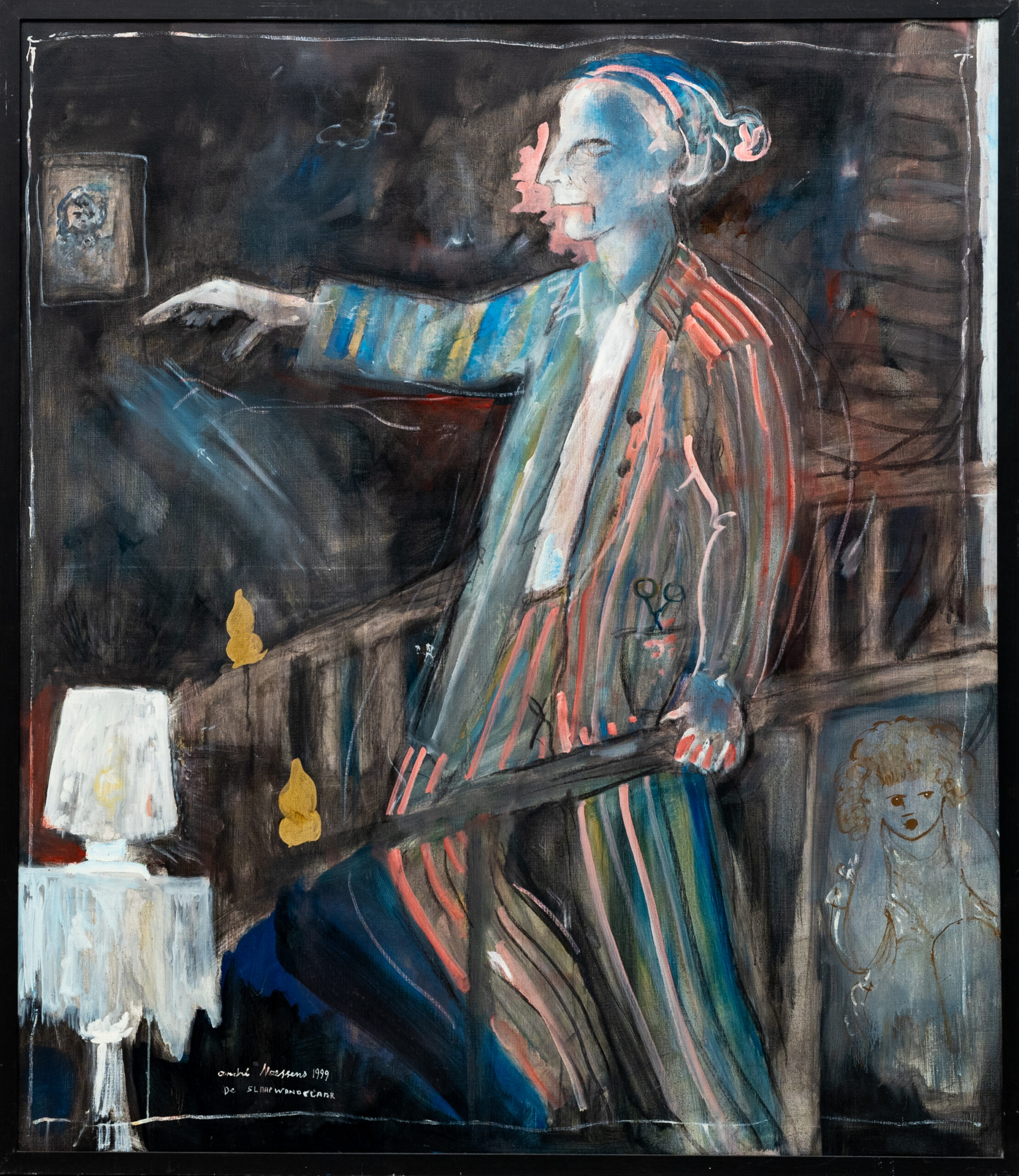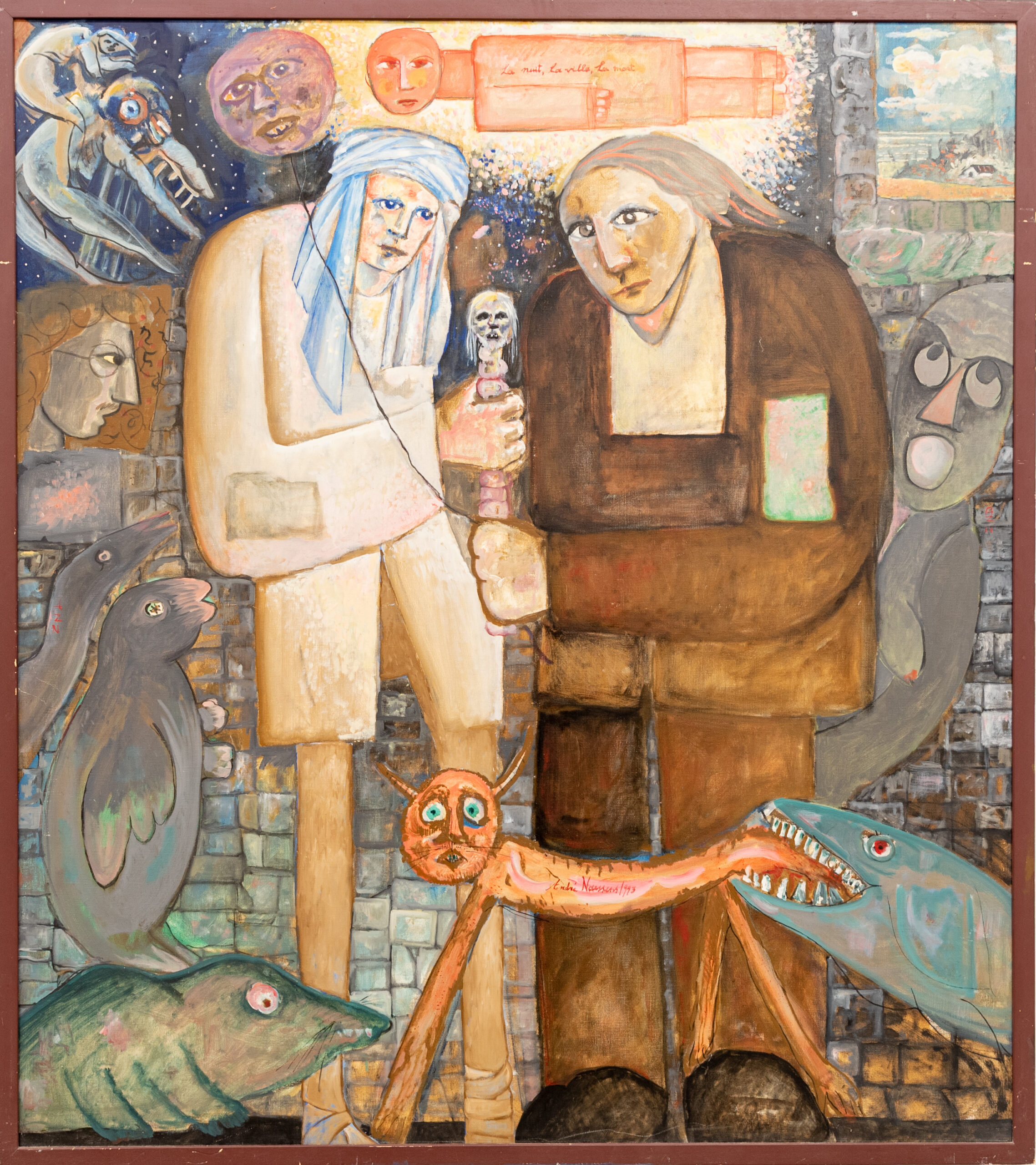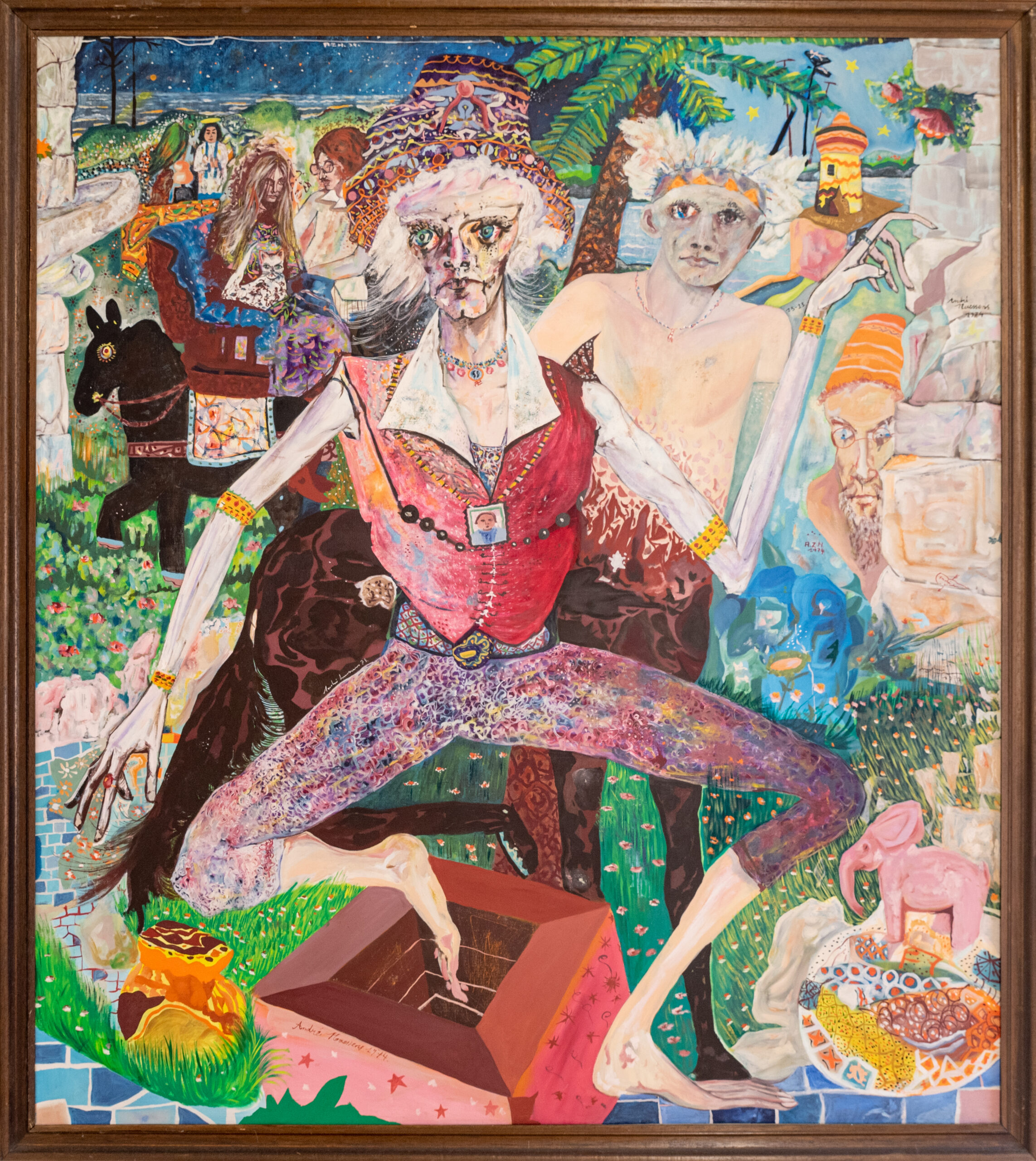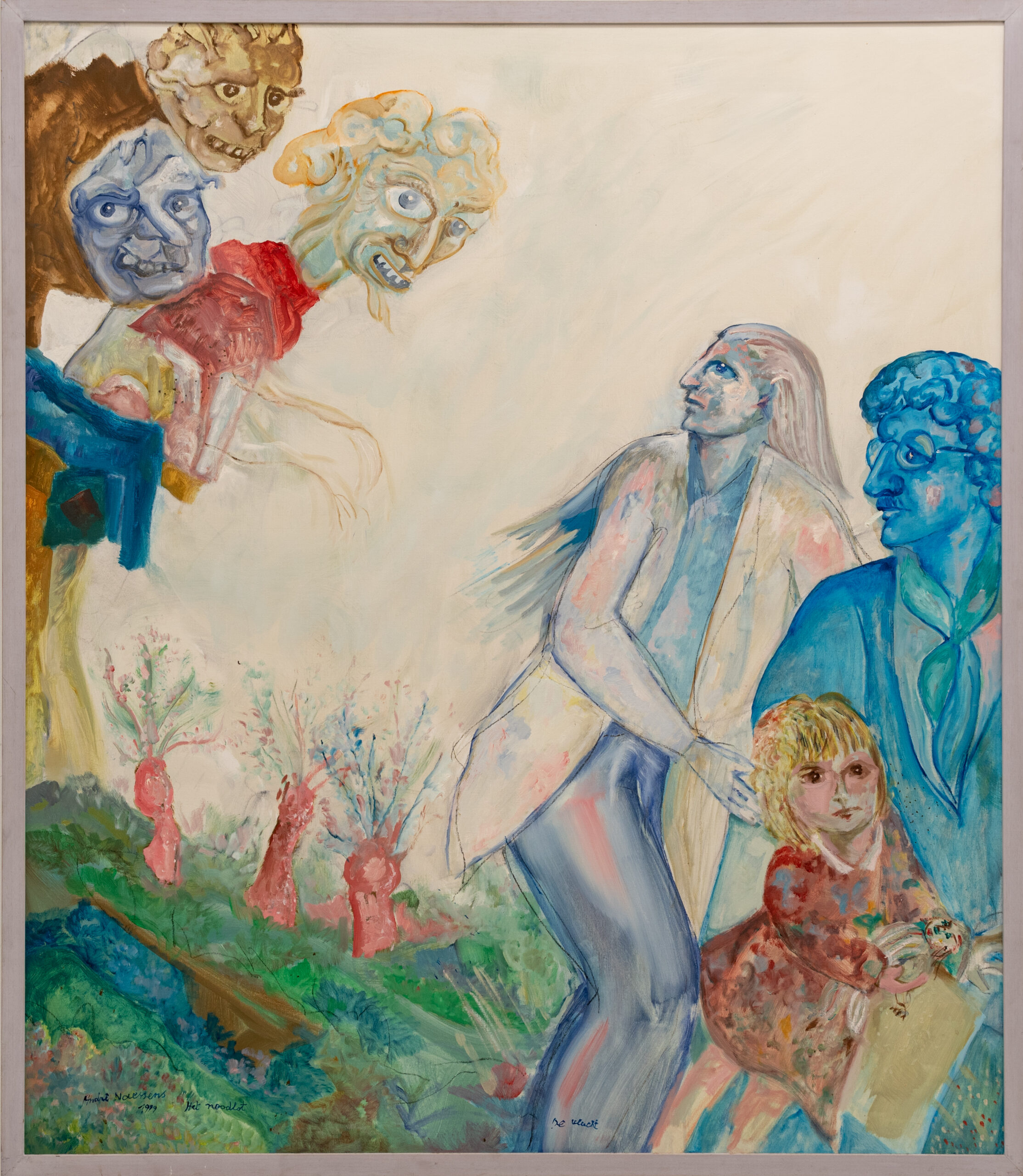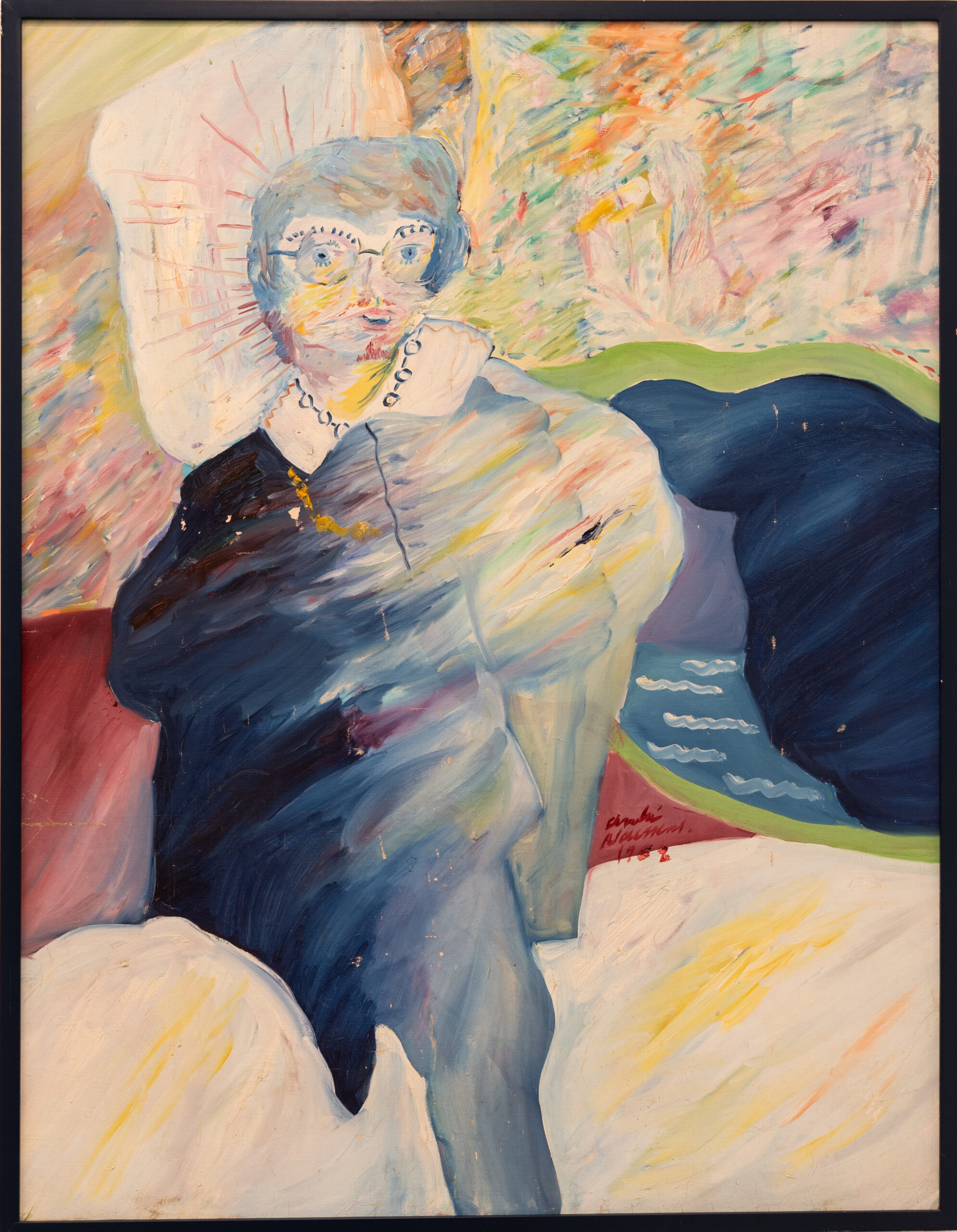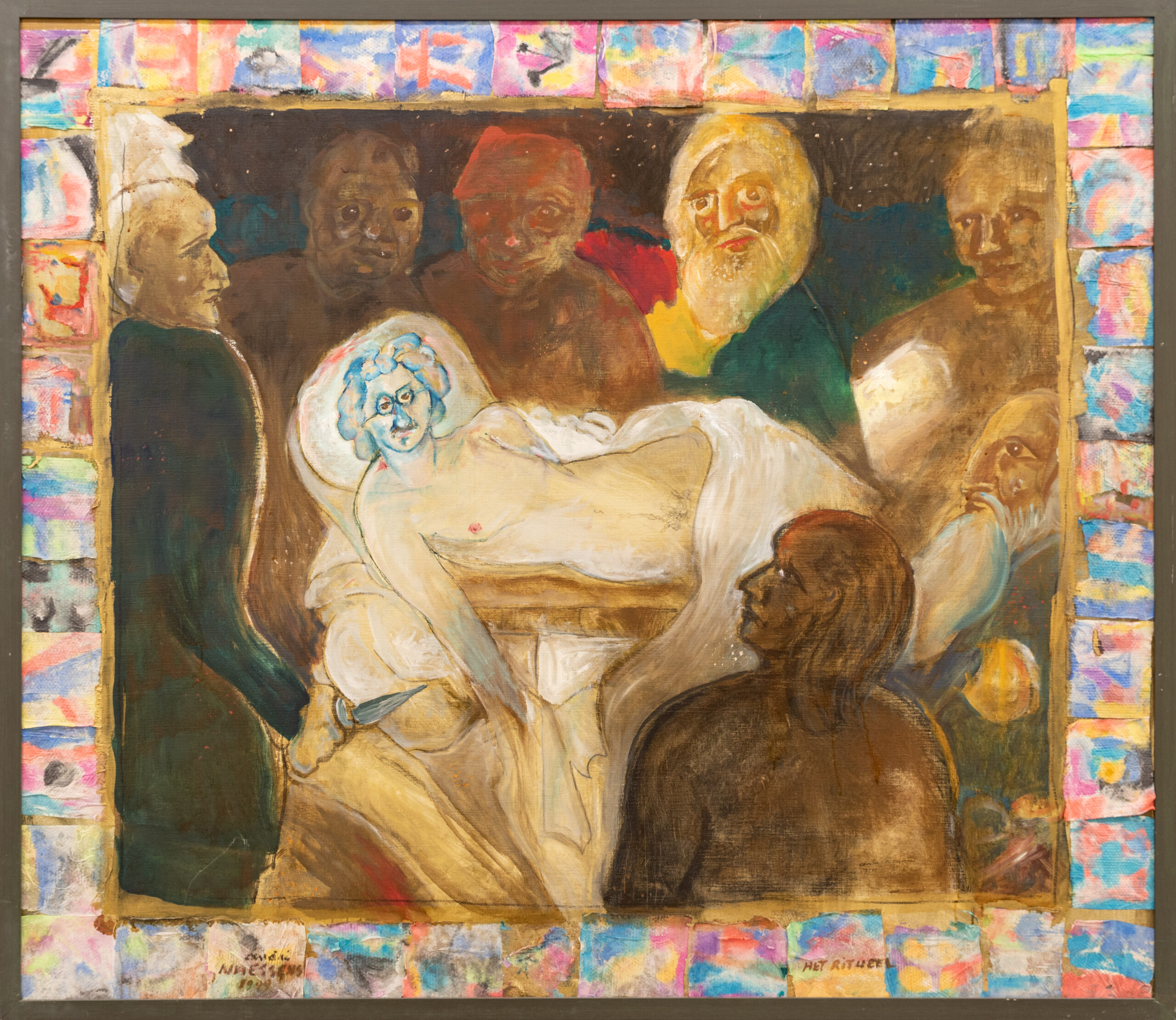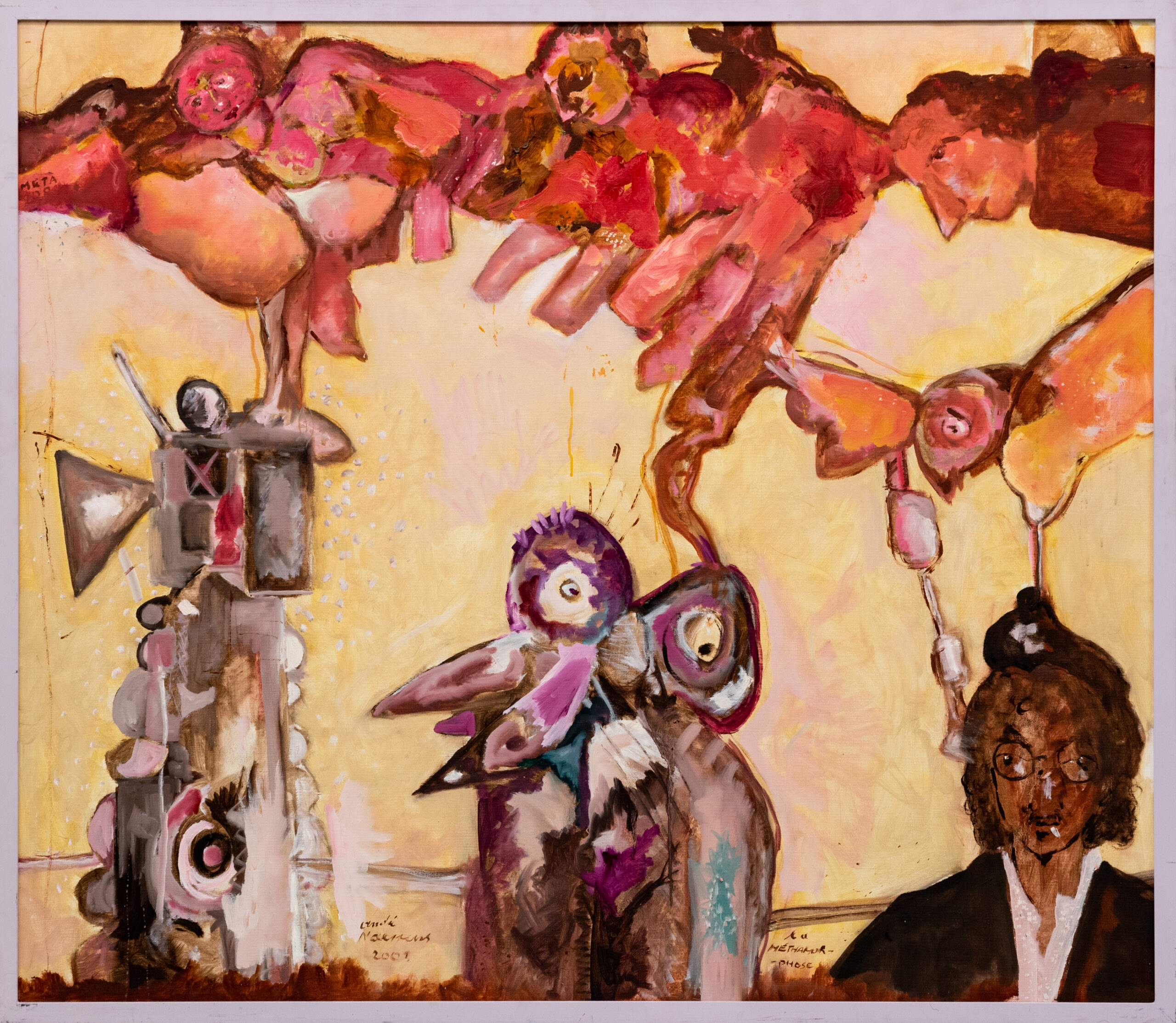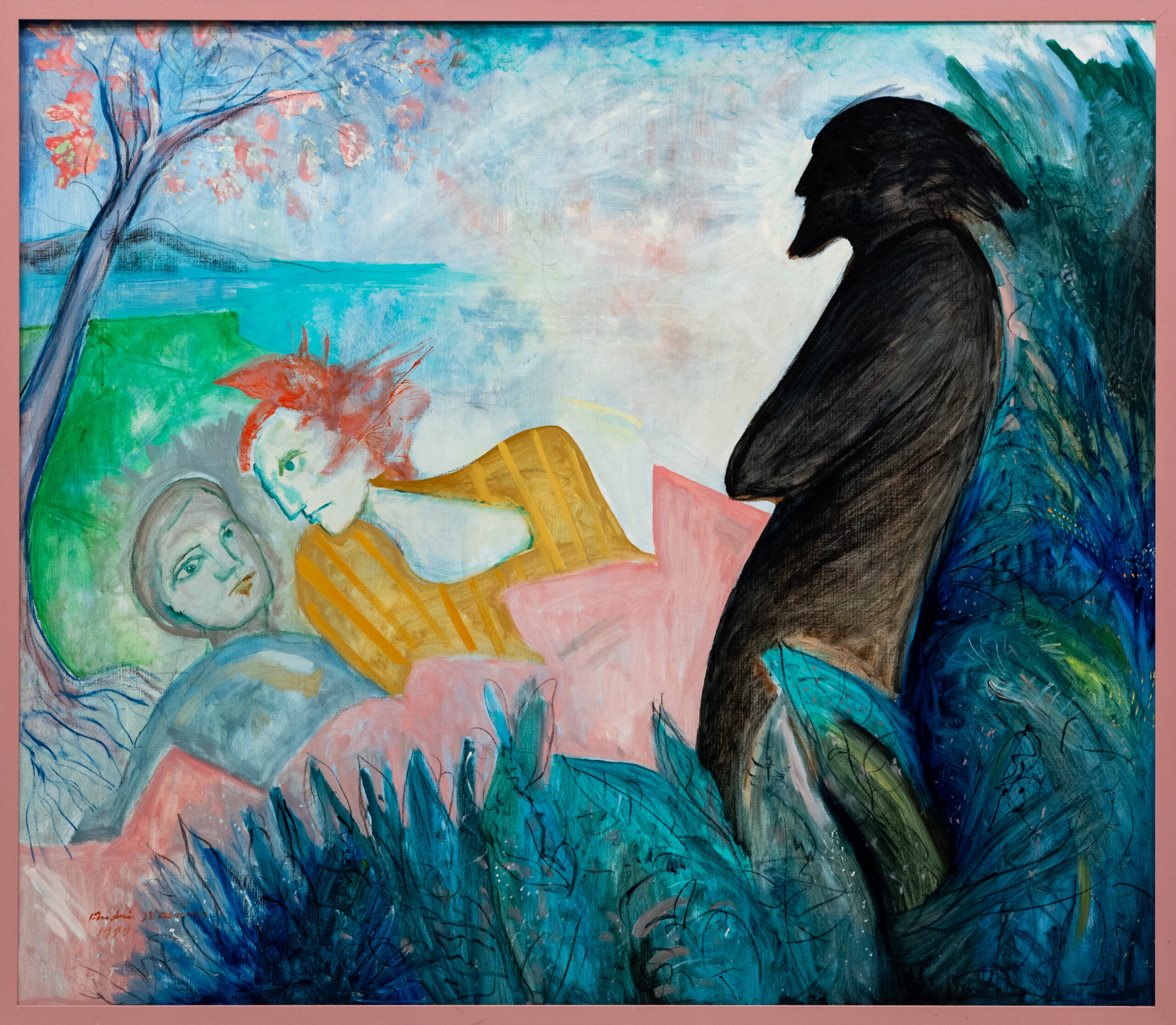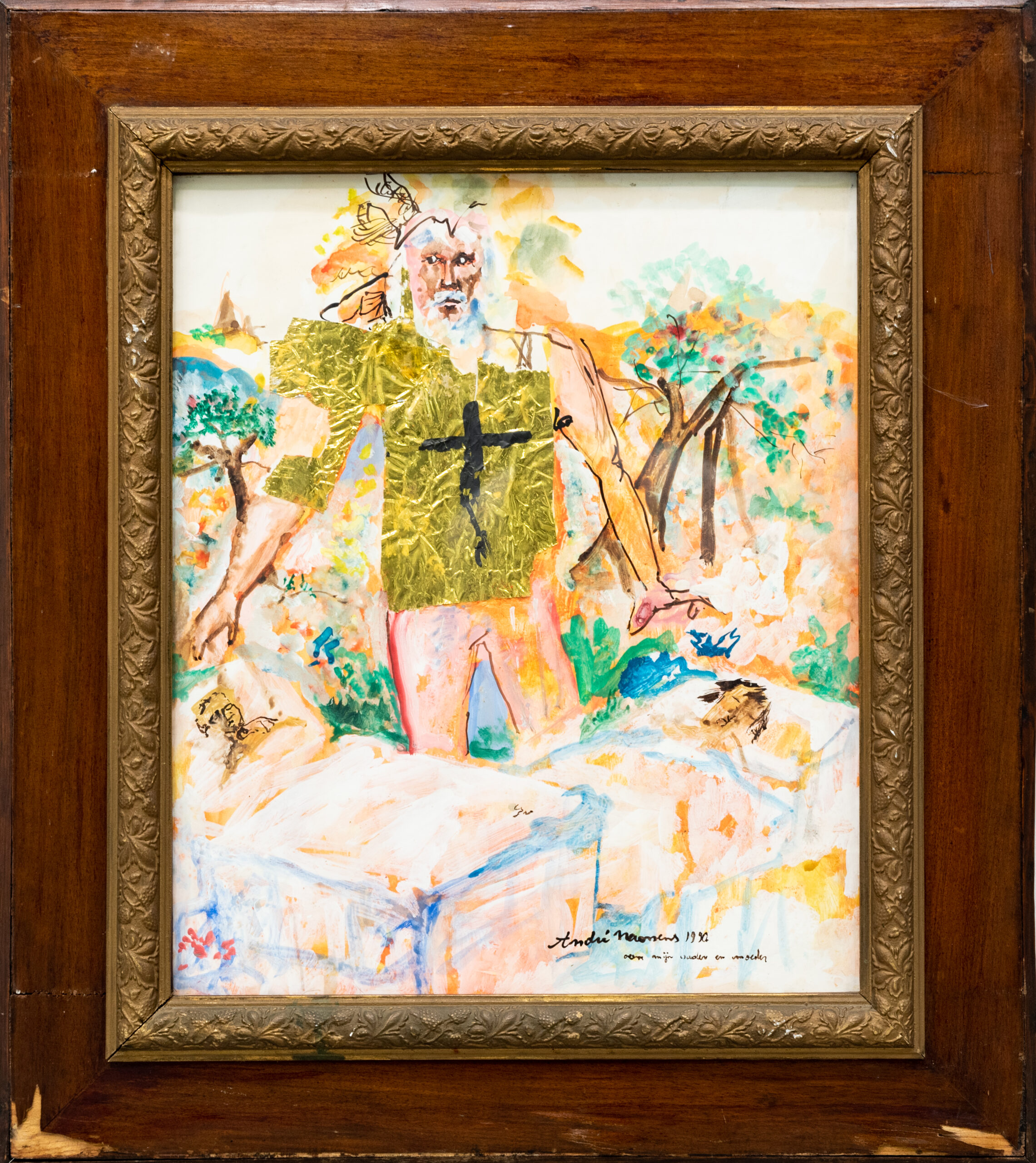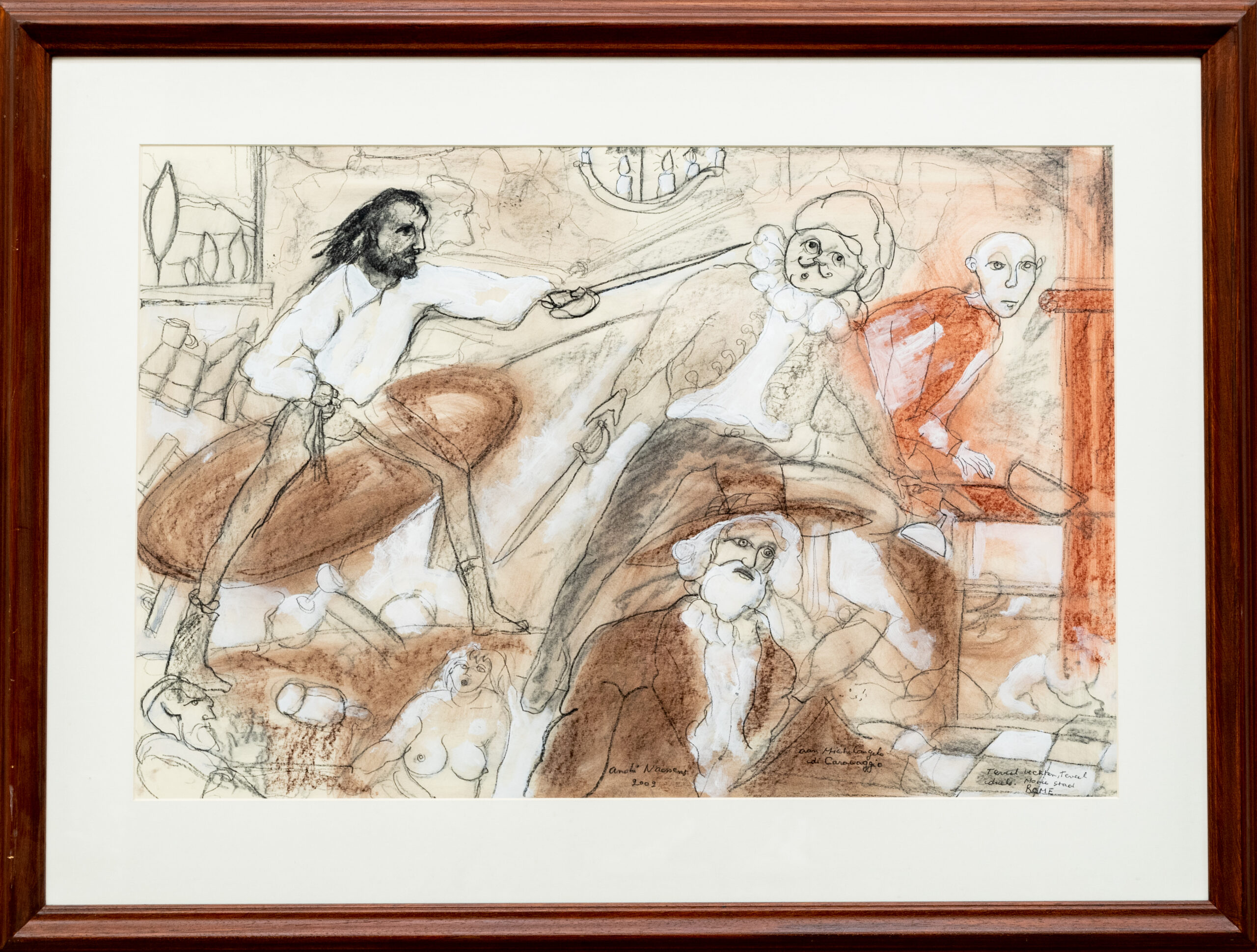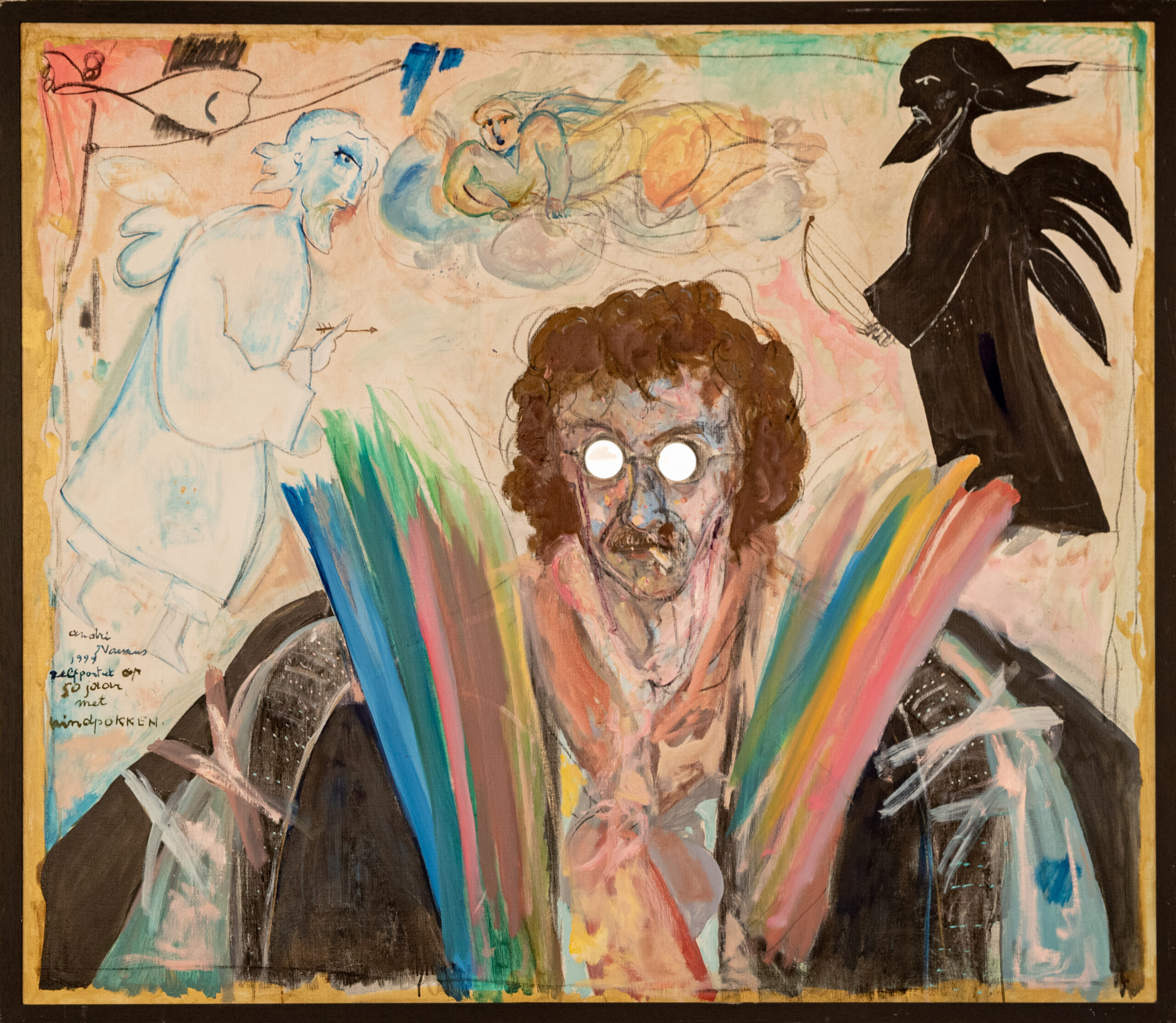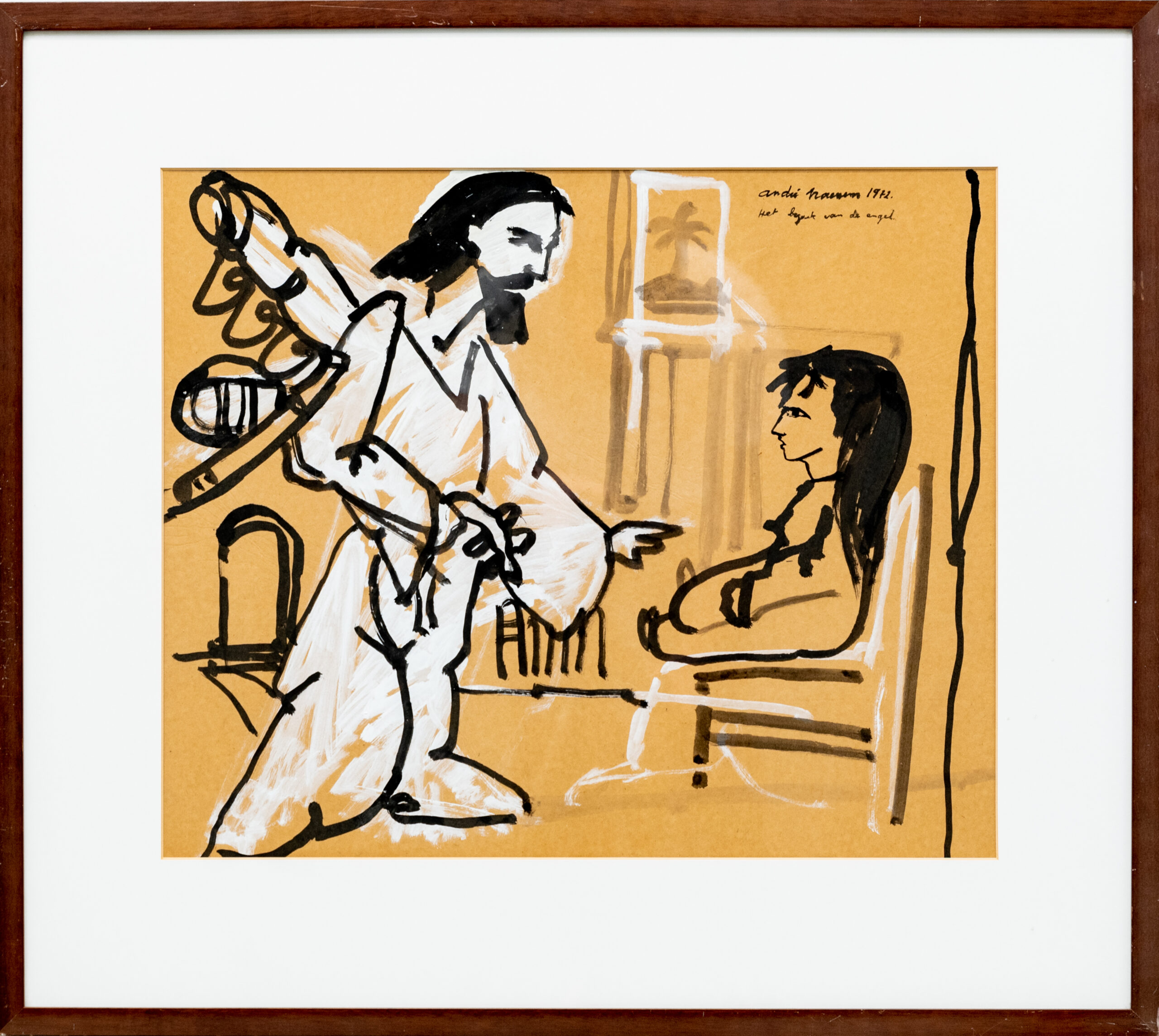André Naessens (°1949- †2003) was een figuratief schilder, tekenaar en grafisch kunstenaar, geboren en getogen in Gent. Na zijn studentenperiode aan, onder andere, het Sint-Lucasinstituut te Gent, sluit hij zich aan bij de Nieuwe Rococo-groep, en ontwikkelt er zijn eigen, half-droomachtige, half-karikaturale stijl, die hij het ’Absurde Zorbisianisme’ doopte.
Met zijn zelfportretten, doorspekt met mythische creaturen, magische figuren, verwijzingen naar muziek en citaten allerhande, behaalt hij in 1969 de “prix Jeune Peinture Belge”, in 1970 de prijs van de stad Ronse, en in 1972 de prijs van Oost-Vlaanderen voor Schilderkunst. In 1976 werd er een film gemaakt over zijn werk en leven.
Zijn techniek vertoont meerdere overeenkomsten met graffitikunst en “écriture automatique,” maar blijft een uniek geheel, dat niettemin bij wijle aan Ensor, Chagall of Alechinsky doet denken. Elk van zijn werken bevat een stevige dosis humor, al is die vaak gitzwart, en nodigt de kijker uit mee te stappen in de wonderlijke, bruisende wereld van dit miskend genie.
André Naessens woonde en werkte achtereenvolgens in Parijs, Griekenland en Ierland, en exposeerde regelmatig te Gent, Brussel en Antwerpen, maar ook in Parijs, Amsterdam en Keulen.
Naast zijn schilderijen, schreef en illustreerde André Naessens een aantal boeken, waaronder ‘Het Gebed van de Spin’ en ‘De Heks van Haaltert’.
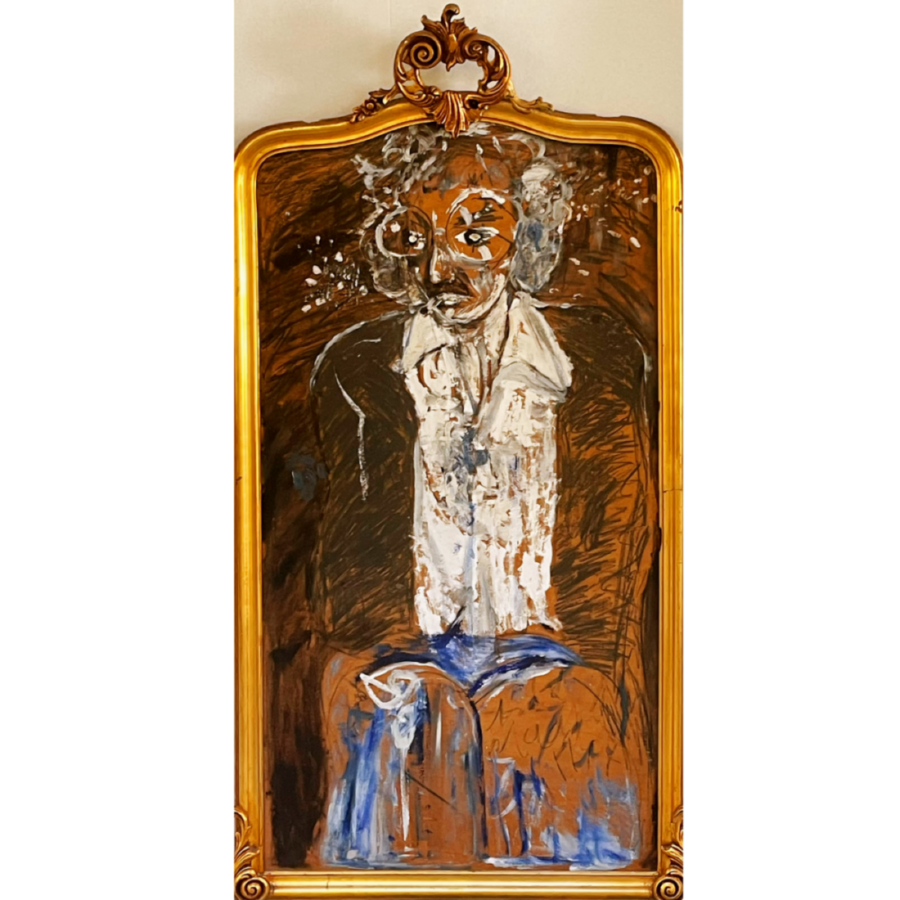
André Naessens (°1949- †2003) was a Ghent-born figurative painter and graphic artist. After his studies at the Sint-Lucas Instituut in Ghent, he joined the New Rococo group and developed his own half-dreamlike, half-caricatural style, which he called ‘Absurd Zorbisianism’. He won the “Prijs Jonge Belgische Schilderkunst”/“Prix Jeune Peinture Belge” in 1969, the Prize of the city of Ronse in 1970, and the Prize of East Flanders for Painting in 1972 with his self-portraits interspersed with mythical creatures, magical figures, references to music, and quotes of all kinds. A film about his work and life was made in 1976. His technique shares many similarities with graffiti art and “écriture automatique,” but remains a unique whole, which is nevertheless reminiscent of Ensor, Chagall or Alechinsky at times. Each of his works contains a healthy dose of humour, albeit often jet black, and invites the viewer to step into the wonderful, vibrant world of this misunderstood genius. André Naessens lived and worked successively in Paris, Greece and Ireland, and exhibited regularly in Ghent, Brussels, Antwerp, Paris, Amsterdam and Cologne. In addition to his paintings, André Naessens wrote and illustrated a number of books, including ‘The Prayer of the Spider’ and ‘The Witch of Haaltert’.
